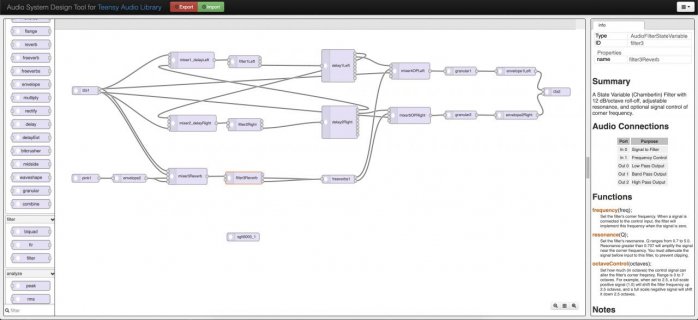Hi all! I have a few questions that I couldn't solve myself. You can answer them all or answer one lol, but I greatly appreciate your time equally. Because of ya'll helpful people I've been progressing & learning heaps.
What type of memory am I looking at operating here? Do you have any suggested learning material where I can better understand how to assess power requirements? I know each module states it at the bottom of the info tab but I can't understand it that much. I've also read that the order of how things are laid out affects the memory usage; can anyone clarify if I'm causing issues here? Sort of a microcontroller newb. I would essentially only be having raw environment noise being processed through this audio system, but not much more than that
2) For using filters, can I route the output of BOTH Band and high pass, like I did on the "filter3Reverb" to the reverb itself? Would that double the input or blend them?
3) I have our initial input going to three mixers, one for left side processing and one for right side processing, and then a third mixer which gives a noise & reverb, which then routes back to the output mixers of Left and Right. Is this an efficient setup? Or am i just adding too many steps here?
Thank you so much for your time!

What type of memory am I looking at operating here? Do you have any suggested learning material where I can better understand how to assess power requirements? I know each module states it at the bottom of the info tab but I can't understand it that much. I've also read that the order of how things are laid out affects the memory usage; can anyone clarify if I'm causing issues here? Sort of a microcontroller newb. I would essentially only be having raw environment noise being processed through this audio system, but not much more than that
2) For using filters, can I route the output of BOTH Band and high pass, like I did on the "filter3Reverb" to the reverb itself? Would that double the input or blend them?
3) I have our initial input going to three mixers, one for left side processing and one for right side processing, and then a third mixer which gives a noise & reverb, which then routes back to the output mixers of Left and Right. Is this an efficient setup? Or am i just adding too many steps here?
Thank you so much for your time!


